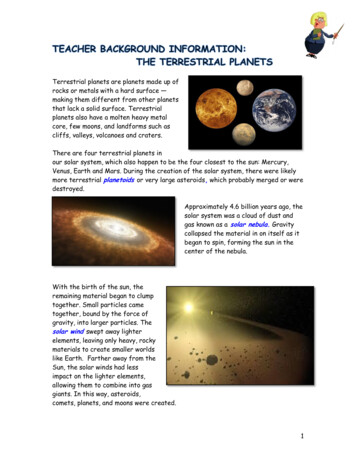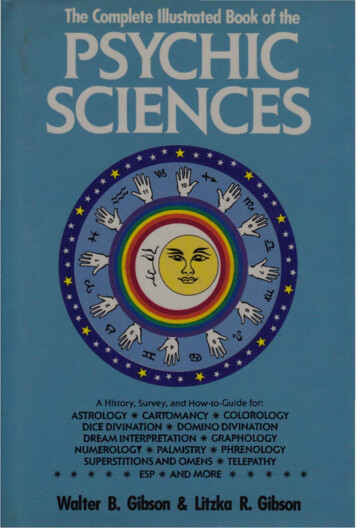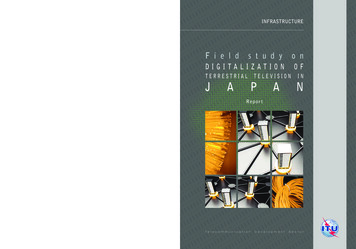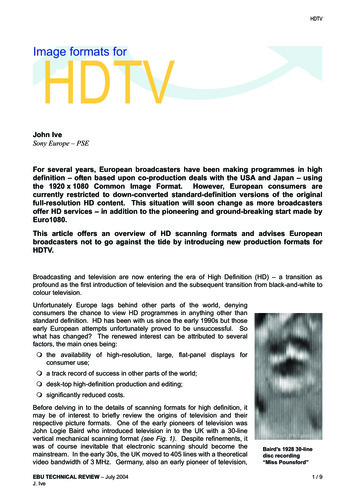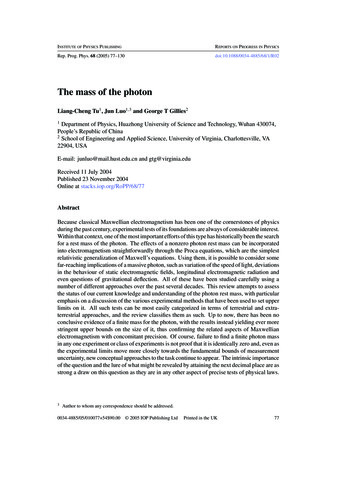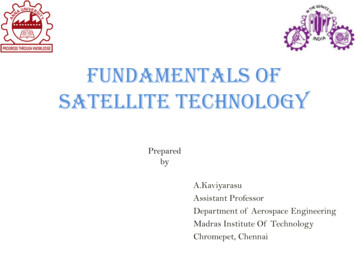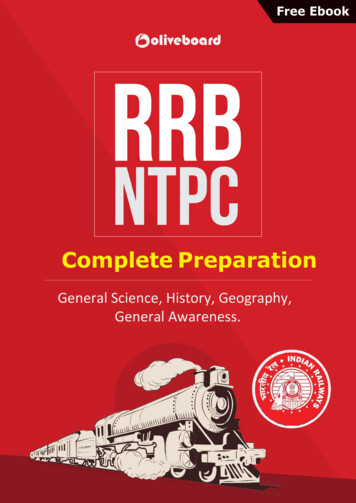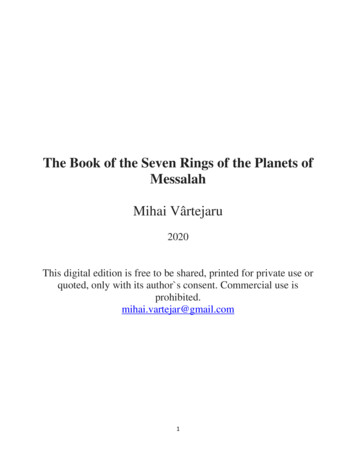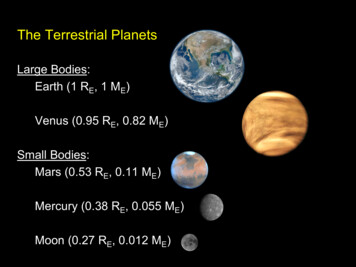
Transcription
The Terrestrial PlanetsLarge Bodies:Earth (1 RE, 1 ME)Venus (0.95 RE, 0.82 ME)Small Bodies:Mars (0.53 RE, 0.11 ME)Mercury (0.38 RE, 0.055 ME)Moon (0.27 RE, 0.012 ME)
The surfaces of the small terrestrial planets wereshaped primarily by impacts and early volcanismMars, Mercury & the Moon:Old, heavily cratered surfaces 3 Gyr oldSingle, continuous crust (no plates)Vertical Tectonism (stationary upwelling)Crustal Shaping:Primary crust: shaped by impactsSecondary crust: shaped by volcanismLava plains (Maria) on the MoonLava plains and volcanic vents on MercuryHot-spot volcanoes on Mars
The MoonImpact BasinMariaCratered Highlands
MercuryMESSENGER
Evidence of past volcanism on Mercury and MarsVolcanic vents on Mercury[MESSENGER]Hot Spot Shield Volcanoeson Mars[NASA MGS]
The surfaces of the large terrestrial planets areyoung, with active tertiary crusts.Earth’s surface is 100 Myr oldVenus’ surface is 500 Myr oldEarth: plate tectonics & lateral recycling:subduction, sea-floor spreading &Up-thrust constantly rebuild the crust.Venus: one-plate crust & vertical recycling:volcanoes over mantle upwelling,compression over mantle down-welling.
The interiors of the small terrestrial planets cooledrapidly and have mostly solidified.A solid mantle ends tectonic activity.All have thick, cool, rigid crusts.Core?MoonMercuryMercury has signs of ancient volcanic vents.Mars has large, extinct shield volcanoes.Mars
The large terrestrial planets cool more slowly andare still hot.Kept hotter longer by energy released from the decayof radioactive elements.Solid inner coreLiquid outercoreVenusEarthConvective motions in molten mantles drives tectonismand gives them active tertiary crusts.
The evolution of Terrestrial Planet atmospheres isdriven by three primary effects:Greenhouse Effect:Solar heating & atmospheric cooling balanceHelps determine if H2O is liquid, ice, or vaporPlanetary Gravity:Determines a planet's ability to retain hot atoms &molecules.Chemistry of CO2 and H2O:CO2 is easily dissolved in liquid H2OHelp determine the atmospheric CO2 content, and itscontribution to the Greenhouse Effect.
The Greenhouse Effect makes a planet’stemperature warmer than if it had no atmosphere.WithoutWithAtmosphere Atmosphere TWaterPhaseEarth255K290K 35 KLiquidVenus280 K750 K 470 KVaporMars214 K220 K 6 KIce
Venus90 atmEarth1 atmMars0.006atm
Mercury is too hot for liquid water, and its gravity tooweak to retain an atmosphere.Lack of liquid water shutdown CO2 and H2O chemistryresulting in a Runaway Greenhouse EffectSurface gravity was tooweak to hold onto itshot atmosphere, so itlost all of its volatilesafter 1 GyrResult: Mercury has no atmosphere today
Venus’ Atmosphere was also too hot for liquid water,but large enough to retain its atmosphere.May have had early oceans that evaporatedresulting in a Runaway Greenhouse Effect.Gravity strong enough to retainits atmosphere, so ended upwith a hot, heavy CO2 and N2atmosphere.All H2O lost to UV photolysisH2 escaped and the O reactedwith other gasses.Result: Venus has a bone dry, hot,hot, heavy CO2 atmosphere
Earth’s Atmosphere was warm enough for abundantliquid water, and large enough to keep it.The H2O condensed into massive, deep oceans and setupa water cycle of evaporation and precipitation.CO2 chemistry in liquid water resultsin most of the CO2 locked up in theoceans & carbonaceous rocks.Plants thrive in liquid water,converting CO2 into O2A mild Greenhouse Effect keepsEarth warm enough for liquid waterResult: Earth has a warm, moist N2 & O2 atmosphere
Mars’ Atmosphere may have been warm enough forliquid water during first Gyr, but could not keep it.Some CO2 locked into carbonaceous rocks?Evidence of past water from the Mars Rovers.As Mars cooled, H2Ofroze out (most mayalready have frozeninto saturated rocks).CO2 and N2 escapesMars’ weak gravity,aided by the solar wind.Result: Mars has a cold, dry, thin CO2 atmospheretoday, but might have been hospitable in the past.
The present-day terrestrial planet atmospheres aredifferent outcomes of atmosphere evolution fromsimilar starting 0K750K220KCO2HabitableInhospitable Today
Earth Venus Mars CO. 2. 0.035% 96% 95% N. 2. 77% 3.5% 2.7% H. 2. O 1% 0.01% 0.007% Ar 0.93% 0.007% 1.6% O. 2. 21% trace trace Temp 290K 750K 220K . The . present-day. terrestrial planet atmospheres are different outcomes of atmosphere evolution from similar
